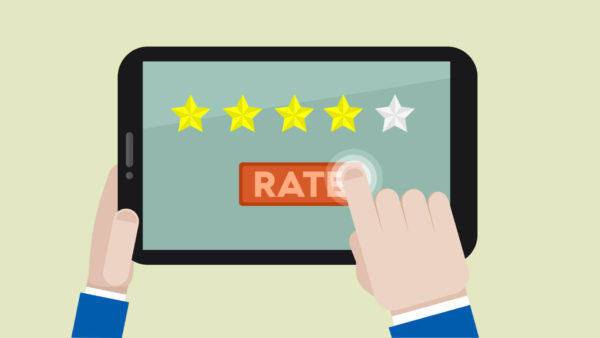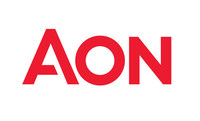Online Reviews, Reputation And How To Become Super Credible

Looking to build your online reputation? Columnist Marcus Miller details the mindset local businesses need to build credibility beyond simple reviews.
Marketing has changed for local businesses. The big, yellow books of yesterday are all but dead and buried. Today, searching for a local business will most likely start on a mobile device, and the selection process goes far beyond a simple print advert with some clever sales copy.
Customers can now tap into a rich tapestry of reviews, testimonials, case studies and social media to determine a business’s credibility.
The local business landscape is more competitive than ever, and a positive reputation can be the key factor in standing out. Studies are now confirming that reviews are a trusted, critical component of generating business from local search with as many as 9 out of 10 users referring to reviews before contacting a local business.
Rather than go over the process of generating reviews, I want to detail a mindset we have used with businesses to build credibility that goes way beyond simple reviews.
Space Robots & Asteroid Mining
How would you feel if you heard about a business that plans to use robotic spacecraft to mine fuel and precious minerals, including platinum and gold, from asteroids? Crazy, right? Science fiction? This must be the plot of a new film featuring Bruce Willis and Ben Affleck!
What if you learned that this is a real business, called Planetary Resources, that was announced in 2012? That the business has a team of highly experienced space professionals including Chris Lewicki, who worked on jet propulsion engines at NASA and has run three separate billion-dollar Mars missions? That he was supported by a team of engineers who had worked on the Mars rover, Curiosity? And that the business itself was founded by two known and respected space entrepreneurs, Peter Diamandis and Eric Anderson, who are involved in several commercial space projects and have experience selling $50 million tickets for trips into space and $150 million trips around the Moon?
Starting to sound a little more possible?
What if you also discovered that backers include Larry Page, Eric Schmidt and Ram Shriram, who have all made a few bucks from a small company called Google? Now we have some of the most forward-thinking business people backing a project that is being managed by the biggest brains in the space field.
Suddenly, this sounds a lot less like science fiction and a lot more like supercool science fact — and maybe, just maybe, you are thinking that if anyone has a shot, it’s these guys. Right?
A Credibility Paradigm Shift
What I am hoping to illustrate above is a credibility paradigm shift in the space of a few short paragraphs. How is this possible? We go from an ostensibly ridiculous idea to one that seems entirely possible (and actually pretty exciting!).
You could go as far to say that, with such a team of backers, the idea goes beyond credibility and is super credible.
The Line Of Credibility
In the book, Bold, by Peter Diamandis and Steven Kotler, the authors introduce the concept of the “line of credibility,” which they utilized when launching Planetary Resources.
The basic premise is that we all have a line of credibility in our mind. When we first hear a new idea, we place it either above or below this line. Below the line, we dismiss it immediately. Above the line, we are willing to give it the benefit of the doubt and follow the idea over time. We also have a line of “super credibility” — when we come across an idea that is highly credible, we are blown away and accept it immediately.
Credibility of ideas can also be lost or gained over time, and ideas may initially seem credible but falter over time. Likewise, ideas may be born with a low level of credibility but become credible or even super credible as time goes on.
Using the Planetary Resources example, the founders and NASA folks were involved in 2009, yet the business was not announced for another three years. The announcement was made only when there was such an all-star roster of space and business people involved that the business launched into public view way above the line of super credibility.
To better illustrate the lines of credibility, the diagram below shows four alternative ideas that had varying credibility at conception and over time. (See caption for full explanation.)
 100vw, 600px” data-lazy-src=”https://searchengineland.com/wp-content/seloads/2015/05/line-of-credibility-533×400.png” /></p>
<p id=) (1) Non-credible rollout; (2) credible rollout, non-credible performance; (3) credible rollout, super-credible performance; and (4) super-credible rollout with continued performance.
(1) Non-credible rollout; (2) credible rollout, non-credible performance; (3) credible rollout, super-credible performance; and (4) super-credible rollout with continued performance.
The following are three examples that range from “dismiss,” “credible,” and “super credible.” I will let you decide which is which:
- A spam email promises you “top Google ranking for only $99” a month. The email has spelling and grammatical errors and comes from a generic email service.
- A search for “plumber” shows a company first in a local pack of search engine results.
- A search for a marketing agency shows a company first in the PPC results with seller ratings (5 gold stars), third in the local pack with 5 gold stars, and in the organic results with review stars showing for the organic listing.
It’s fairly simple to figure out which of these businesses enter your awareness as credible, super credible or ripe for instant dismissal. This example illustrates how credibility is layered over a typical local visibility strategy.
SEO Basics
Reviews are important, but you must also take a quick pit stop to ensure the SEO “nuts and bolts” are all in place. Page titles, meta descriptions and your Google My Business page must all be completed and carefully crafted to ensure returned listings for your business look the part and deliver your message.
This is the foundation that your credibility is built upon, so be sure to get these basics 100% dialed in.
The Three Stages Of Credibility
To effectively apply the line of credibility to local search, we have to change the model a little and consider the customer journey. How do potential customers become aware of us? How credible do we look upon further investigation? What can we do to further push credibility over time and prevent a dip below the line of credibility?
We have found it useful to break your journey towards “super credibility” into these three stages:
1. Initial Awareness
How credible do you appear on a first glance? How did the prospect or customer discover you? Remember that certain strategies and/or situations may introduce your business under the line of credibility (e.g., bad reviews), which makes your first job to pop above the line.
An example of how to make your customer aware of your credibility is the star rating that appears on your paid, organic or local search results. Five or more reviews on your Google My Business page will add those all-important stars to your listing. This is critical to illustrate initial credibility and launch you into the customers conscience as a credible business.
The example below shows how effective this can be. With only one business having reviews amongst the paid, local and organic listings, this business stands out as a beacon of credibility. (Disclosure: this is my company)
 100vw, 800px” data-lazy-src=”https://searchengineland.com/wp-content/seloads/2015/05/one-credible-seo-company-800×517.jpg” /></p>
<p>In many local businesses, having reviews on your Google My Business page and in the local results will be enough, but you can go way further. If your keywords return results for business directories (e.g., Yelp, Urban Spoon, TripAdvisor, Angie’s List, etc.) then often these will allow for reviews. In certain industries, prospects will go directly to these trusted portals to locate businesses and check out reviews.</p>
<p>Optimizing your listings on these popular sites and (in the case of sites like TripAdvisor) actively working to ensure that you are well ranked can boost credibility. Similarly, mentions or guest content on highly credible blogs and news outlets in your space can provide a highly credible introduction to your business.</p>
<p>If you run paid search advertisements, then generating reviews on sites like Feefo will allow you to connect your PPC account to those seller ratings. If your competition is doing this and you are not, you may introduce your business under the line of credibility. Furthermore, if others are not yet showing reviews in their paid listings, you can generate a strategic credibility advantage.</p>
<p>The following example shows two advertisers: one with a very basic PPC advert and another with a more comprehensive listing using callouts, sitelinks and seller ratings. This seller’s rating of 3.7 stars is not ideal, but it still seems the more credible of the two listings due to the presence of stars; this works on an almost subconscious level.</p>
<p><img class=) buyer personas to provide additional insight into where your priorities lie.
buyer personas to provide additional insight into where your priorities lie.
The Tools Of Credibility
There are many tools in the credibility toolbox, and choosing the right ones will depend upon your business and the customers you are targeting. Your market research and buyer personas will guide you here.
The following is not an exhaustive list, yet these elements will likely be the backbone of any serious credibility campaign.
1. Reviews
Reviews are really the big one for many local businesses. Some thought must be given to the location and type of reviews needed. In many cases, Google+ is a good starting point; you can then branch outwards from there.
2. Testimonials
Simple testimonials from real people can work wonders. If you can link to their social media profiles and have a nice, smiling picture along with a quote of lofty praise, then all the better. Again, consider your target customers when deciding who to use and the content of these testimonials.
3. White Papers & Ebooks
White papers and ebooks provide a solid way to demonstrate your credibility. Better still, these can be used with various other promotion tools (paid, social, organic) to help generate awareness.
4. Case Studies
A recent study by the Content Marketing Institute demonstrated that 63% of marketers believe case studies to be effective, and I feel this is somewhat conservative. Case studies can be packed with facts and figures that clearly illustrate how you have boosted profits and provided a clear return on the investment for similar customers. When it comes down to larger projects (and you are in the running with other companies), then case studies are the tool for the job.
5. Blog Posts
You don’t need to think of blogging on your own site as being purely about building masses of traffic; this form of content can provide evidence of how well you know your trade. Likewise, external posts on highly visible sites in your industry can lend credibility and build an audience. Many of the bigger SEO and digital marketing companies have a “featured in” section on their homepage showing where they blog to borrow credibility from these key industry sites.
6. Social Media
Social media can provide a window into the business and is yet another place where reviews can be gathered. More telling is how the company at a brand and employee level interact with customers, prospects and their industry as a whole. What better way to assess credibility at a granular level than to follow the boss and his team members and see what they are up to? Do you respond to questions from prospects? Are you posting embarrassing drunken messages? Arguing with customers?
Social can also be a powerful tool to seed out your case studies, testimonials, white papers, and other credibility-building content.
7. Third-Party Sites
In every industry, opportunities abound to be mentioned on external sites — from general business directories to vertical-specific directories, from location-focused websites to more typical citation sources. If these portals rank well in your industry/location, then chances are these present an opportunity to develop more positive reputation signals and to funnel more warmed up traffic from these sites.
Putting It All To Work
I have outlined some key strategies here, but in many cases, it is the intersection of these elements that work together to deliver super credibility.
For example, let’s say you have a bunch of killer case studies. You could write blog posts that summarize the main takeaways, then promote those blog posts on social media. You could develop video versions or slide presentations based on these case studies. You could mention the case studies on your main landing pages, in email signatures, in newsletters, and anywhere they might help drive awareness and convert that browser into a buyer. You want to get yourself in front of the potential customer from every angle and ensure that every interaction they have with your business or brand is a positive one.
With an SEO mindset, it can be all too easy to focus solely on ranking a few spaces higher — while forgetting that we also need to win clicks and convert those users while we have their attention. The strategies here will drive engagement with your search listings and subsequently convince those browsers that you are the man for the job.
In fact, the word around the Local SEO campfire (which is backed up by some small-scale experiments) is that engagement with local listings can have a positive impact on rank in the local pack. Further to that, the more rich, credible content you build, the more of a reason people have to talk about and link to you, and the bigger your digital fingerprint becomes — all good things.
Becoming A Credibility Super Hero
Credibility is relative. In some industries/locations, there are still very few reviews. In these situations, becoming the most credible company can be easy, and this is a better use of your time than simply focusing on moving your listing a few more positions up the local pack.
If you have one takeaway from this article, it should be to aim higher. Reputation is everything in business, so don’t just get the same 5 reviews your competitors have. Do more than you think you need to. Don’t settle for just being credible. Be more. Be super credible.


